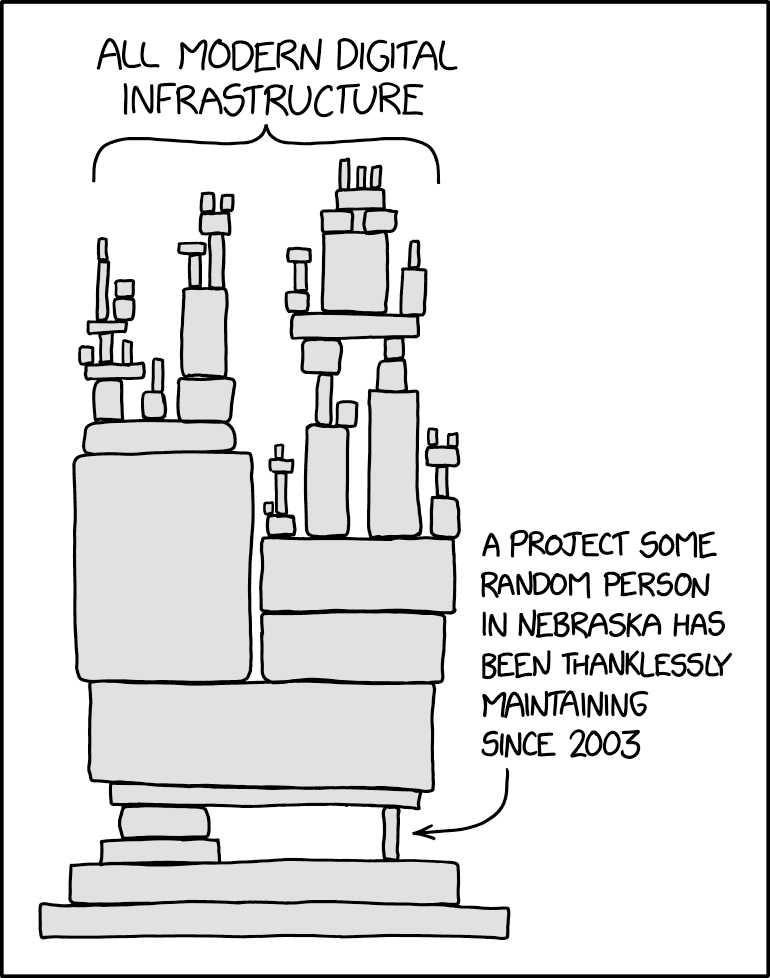

Tbf, this is something that only some distros do. Those distros should be reprimanded for handling home directories with the tmpfiles system, not systemd.


Tbf, this is something that only some distros do. Those distros should be reprimanded for handling home directories with the tmpfiles system, not systemd.
I’ve been using a Raspberry Pi 400 with LibreELEC installed. Mostly watch 4K HDR Blu-ray Remuxes that I have on another machine with a Samba server. Works really well for me.
Another good option would be to have Jellyfin on a media server and cast to the TV or use the TV directly if it has a Jellyfin app (I know there are official apps for Roku and WebOS (LG)). Jellyfin is similar to Plex but open-source and fully local (no need for an external account).
Of course, this is only works for local media. For streaming, just use a Chromecast.


You can’t. Just wait for it to be stable
A line of code that enables the backdoor was out present in the tarball. The actual code was obfuscated within an archive used for the unit testing.
I like the way kde does it. On first install it gives a slider with how much analytics you want to send. I just do all of it because I trust KDE, but it’s nice that it asks you. They probably have some pretty good data.


HashiCorp Nomad is a competitor to Kubernetes: https://www.nomadproject.io/


I imagine you could find a lot of options. Just a quick google turned up ThinStation, which only needs 30-50MB if storage and 64MB+ of RAM. A bit outdated, but should work fine.
You could also make your own OS with LFS if you want to optimize it to the extreme.


Chrome is actually doing a lot of work to display modern webpages though. A thin client only needs to receive a video stream and send inputs to a server. That can be done with an extremely low memory footprint. The Steam Link only had 512MB of RAM and it actually ran a steam client (which contains embedded chromium) instead of acting as a pure thin client.


Yeah, it looks like that little Jenga block from the xkcd meme was XZ and a bunch of infrastructure is gonna have issues because of it.



We also need support for the new protocol in Nvidia’s driver. Support will be available in driver 555, the beta of which will be released on May 15. So there’s still some time to wait until it’s fully fixed.


The Nvidia driver on Wayland has been decent for a couple of years and stabilized a lot over the past ~6 months. The flickering issue was specific to XWayland. Normal Wayland apps don’t have flickering problems (not quite sure why tbh), but XWayland apps would often rapidly flicker between 2 frames since it only supported implicit sync, which confused the Nvidia driver, which only supports explicit sync. Now with a Wayland protocol for explicit sync, XWayland can be updated to support it and resolve the flickering there.


I used to use this when I still had a hard drive, but this does nothing for performance if you’re on an SSD and profile writes are so few with browsers that it doesn’t significantly affect drive wear. In the end, all this does is make it more likely that something will break.


Is anyone doing 4K at above 60Hz with the steam deck? I highly doubt it.


Your info is outdated. DP 2.0 is 80 Gbps can do 4K@240hz without display stream compression. It can do up to 16K@60hz using DSC.
How many people are reading blogs on their steam decks though? I don’t think it’s having much of an effect for statcounter
The article answers your question


If you actually knew how to program both Java and JavaScript (originally called Mocha btw), you would know that they are very different languages. Saying that JS was intended to have a similar syntax to Java is like saying Java was intended to have a similar syntax to C. They’re both true, but it doesn’t really mean anything.


They’ll argue that they didn’t sign the treaty, the USSR did.


HDMI isn’t necessary for HDCP though. HDCP also works over DisplayPort and even DVI.
Edit: The HDMI article on Wikipedia that you linked even says:
The HDMI founders began development on HDMI 1.0 on April 16, 2002, with the goal of creating an AV connector that was backward-compatible with DVI. At the time, DVI-HDCP (DVI with HDCP) and DVI-HDTV (DVI-HDCP using the CEA-861-B video standard) were being used on HDTVs. HDMI 1.0 was designed to improve on DVI-HDTV by using a smaller connector and adding audio capability and enhanced Y′CBCR capability and consumer electronics control functions.
What about the installer? Anaconda isn’t great, but you only need about 1 minute to set the options to install and then let it do it’s job before rebooting.